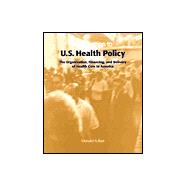
Donald A. Barr received his M.D. from the University of California, San Francisco and his Ph.D. in sociology from Stanford University. His is an associate professor of sociology and human biology at Stanford and is the founder and director of Stanford's undergraduate health policy curriculum. His research focuses on the effect of the organizational structure of the medical care delivery system on the quality of primary care.
Dr. Barr has a unique perspective of being both a practicing physician and an academic sociologist. He has experienced first hand the sweeping changes that have occurred in the organizing and financing of health care through 25 years of medical practice in Northern California. As an experienced researcher and writer in the area of health policy, he is able to combine a broad understanding of the social and economic factors affecting health care with an appreciation of the effects of these changes on the quality of care experienced by patients and practitioners alike.
Dr. Barr is a member of the American Public Health Association, the Academy for Health Services Research and Health Policy, and the American Sociological Association.
| Foreword | xi | ||||
| Preface | xii | ||||
| Acknowledgments | xxi | ||||
|
1 | (15) | |||
|
2 | (3) | |||
|
5 | (3) | |||
|
8 | (1) | |||
|
9 | (3) | |||
|
12 | (4) | |||
|
16 | (23) | |||
|
17 | (1) | |||
|
18 | (6) | |||
|
24 | (2) | |||
|
26 | (1) | |||
|
27 | (9) | |||
|
36 | (3) | |||
|
39 | (28) | |||
|
40 | (6) | |||
|
46 | (1) | |||
|
47 | (4) | |||
|
51 | (2) | |||
|
53 | (3) | |||
|
56 | (2) | |||
|
58 | (2) | |||
|
60 | (4) | |||
|
64 | (3) | |||
|
67 | (22) | |||
|
68 | (6) | |||
|
74 | (2) | |||
|
76 | (4) | |||
|
80 | (4) | |||
|
84 | (5) | |||
|
89 | (19) | |||
|
91 | (5) | |||
|
96 | (2) | |||
|
98 | (1) | |||
|
99 | (1) | |||
|
100 | (2) | |||
|
102 | (2) | |||
|
104 | (1) | |||
|
105 | (3) | |||
|
108 | (18) | |||
|
110 | (1) | |||
|
111 | (3) | |||
|
114 | (3) | |||
|
117 | (1) | |||
|
118 | (3) | |||
|
121 | (1) | |||
|
122 | (1) | |||
|
123 | (1) | |||
|
124 | (2) | |||
|
126 | (25) | |||
|
128 | (5) | |||
|
133 | (2) | |||
|
135 | (1) | |||
|
136 | (15) | |||
|
151 | (19) | |||
|
152 | (3) | |||
|
155 | (3) | |||
|
158 | (7) | |||
|
165 | (3) | |||
|
168 | (2) | |||
|
170 | (17) | |||
|
171 | (1) | |||
|
172 | (4) | |||
|
176 | (4) | |||
|
180 | (2) | |||
|
182 | (1) | |||
|
183 | (4) | |||
|
187 | (17) | |||
|
188 | (2) | |||
|
190 | (1) | |||
|
191 | (4) | |||
|
195 | (3) | |||
|
198 | (6) | |||
|
204 | (19) | |||
|
205 | (2) | |||
|
207 | (1) | |||
|
208 | (1) | |||
|
209 | (6) | |||
|
215 | (1) | |||
|
216 | (1) | |||
|
216 | (7) | |||
|
223 | (16) | |||
|
227 | (5) | |||
|
232 | (2) | |||
|
234 | (5) | |||
| Index | 239 |
The New copy of this book will include any supplemental materials advertised. Please check the title of the book to determine if it should include any access cards, study guides, lab manuals, CDs, etc.
The Used, Rental and eBook copies of this book are not guaranteed to include any supplemental materials. Typically, only the book itself is included. This is true even if the title states it includes any access cards, study guides, lab manuals, CDs, etc.